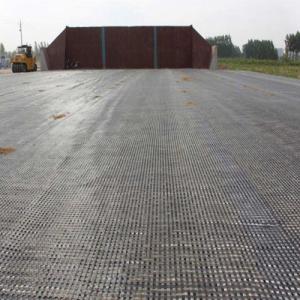The modern civil engineering fabric is Geotextiles and has revolutionized the construction industry. They are available in various forms, but the commonest ones include woven and non-woven geotextiles. These materials help to provide reinforcement, filtration, and separation in diverse applications. Let us dive into the world of geotextiles and explore the differences between woven and non-woven varieties.
The Woven Geotextile: A Strong Weave for Reinforcement
Woven geotextiles are comprised by fibres that have been interlaced into a pattern creating a strong durable material. It is known for its high tensile strength as well as resistance to deformation. This type of geotextile is popularly used in constructing embankments, roads and retaining walls where it can be necessary to reinforce these things. The interlocking of fibers in woven geotextiles provides a stable and reliable structure that can withstand heavy loads over long periods without changing shape.
The Non-Woven Geotextile: A Bonded Solution for Filtration
On the other hand, non–wovens are made by bonding fibers together without weaving them. This produces a flexible fabric which is cost effective when it comes to filtration purposes. Non-wovens come in handy where water needs to be managed such as drainage systems or slopes around residential areas. The purpose of having bonded fabric that lets water through while holding soil particles back is to keep the structure’s integrity intact.
Applications and Benefits
Both types have their unique applications and benefits respectively.Woven geotextiles on the other hand get applied more commonly under demanding conditions when stability is paramount because they are strong and durable.They may also be found within coastal structures, where they assist with erosion control as well as provide anchorage points for vegetation.
Non-wovens, which filter works excellently also apply commonly used landscaping/horticulture. They help to retain moisture and nutrients in the soil which is a great avenue for plants’ growth. Besides, in large-scale projects where budgeting is a concern they are popular due to their cost effectiveness.
The Environmental Impact
One of the most important aspects of geotextiles is their positive environmental impact. Both woven and non-woven materials have been designed to last long and decrease the requirement for more resource-intense materials. They also minimize soil erosion that contributes significantly to environmental degradation.
Personal Experience with Geotextiles
I have had many experiences with geotextiles in different projects and I must admit that they make all the difference. From when I first touched a woven fabric, it was clear this one was of strength and persistence too. It is as if he has a purpose for his creation and will persist into eternity.
In another project, we used non-woven geotextiles to manage water runoff in a new park we were building. The results were amazing. As such, no soil was eroded due to its absorption of rainwater while maintaining beauty of the area.
The Future of Geotextiles
As we move towards a more sustainable future, the use of geotextiles is only going to increase. With advancements in material science and engineering, there will be even more interesting uses for these fabrics anticipated shortly,. From reinforcing structures in earthquake-prone areas to creating more efficient water management systems, infinite possibilities exist here .
Conclusion
In conclusion, it can be said that woven and non-woven geotextiles are like two sides of a coin, each having its own specific characteristics and applications. Whether you need to reinforce or filter, there is certainly a geotextile in existence that will effectively serve your needs. Thinking about my exposure to the materials in question, I am filled with awe at their cleverness and their usefulness. Woven and non-woven geotextiles are not only textiles but also the foundation of an eco-friendly future world.







